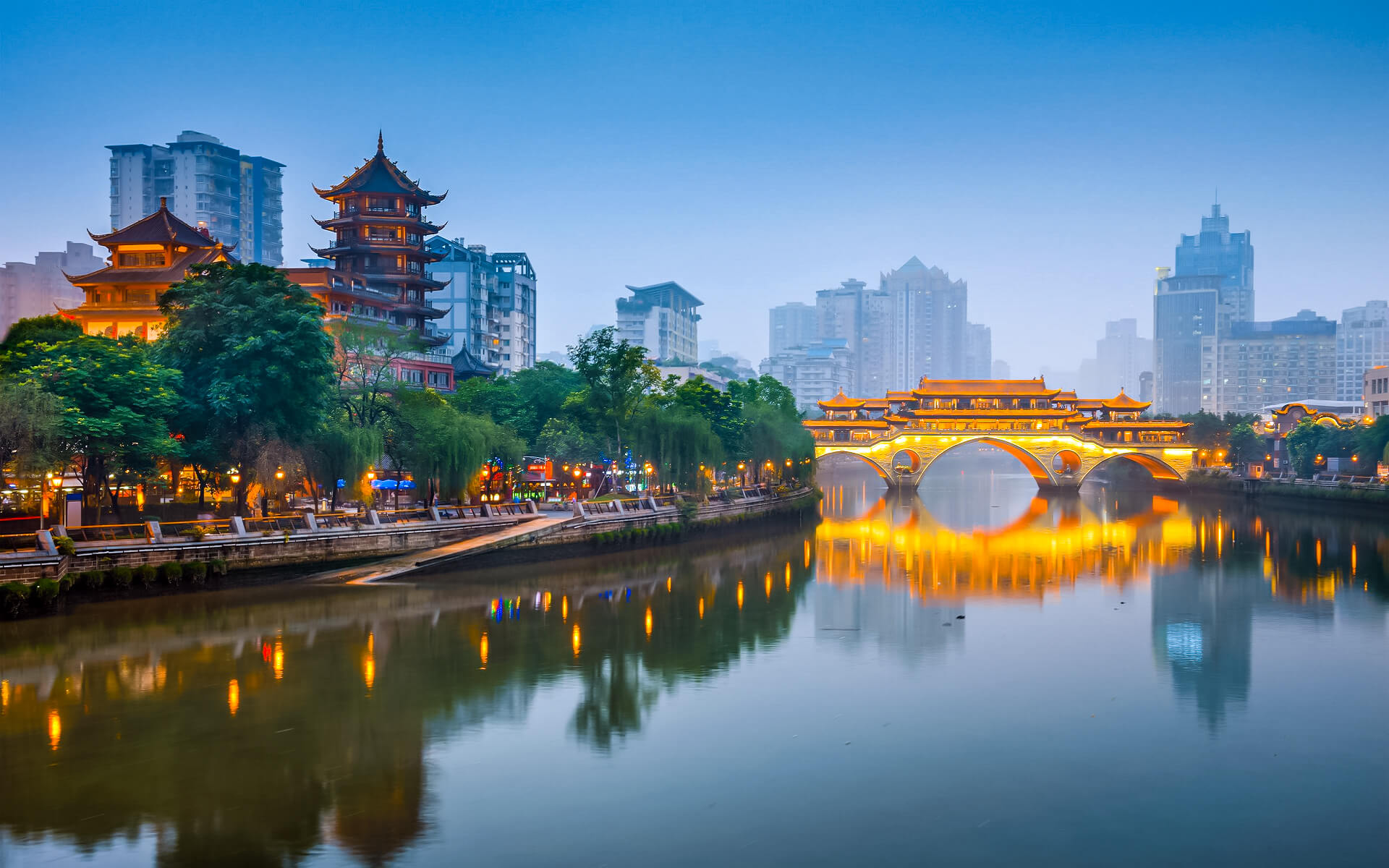There is no shortage of delicious and fiery Sichuan dishes in Chengdu. Most of the dishes are quite spicy. Be sure to indicate when ordering: not spicy (不要辣; búyàolà), a little spicy (微辣; wēilà) or “old” (very) spicy (老辣; lǎolà). If you’re not used to it yet, a bottle of sweetened soy, almond, peanut or cow’s milk, or any other sweet product, will be much more effective than water in putting out the fire. If you are used to the spiciness of authentic Indian or Thai dishes, the spiciness of Sichuan cuisine should not be a problem. However, Sichuan cuisine also makes heavy use of Sichuan pepper (花椒; huājiāo), which looks like a peppercorn but isn’t really a peppercorn and can make your mouth a little numb. Sichuan pepper is added to most spicy dishes. If you can eat spicy dishes but don’t like Sichuan pepper, you should order it (不要花椒; bú yào huājiāo). However, Sichuan pepper (in addition to its anesthetic effect) has an important citrus flavor that it adds to dishes, and the authentic Sichuan flavor relies on the interaction of the aromas of Sichuan pepper and Chilean pepper, and it is highly recommended to at least try the authentic Sichuan pepper versions before making a choice.
The spiciest dish in Chengdu is the hotpot (also called steampot or steamboat), although the tradition originated in Chongqing and so it is not really Chengdu food. Sichuan hotpots are actually a large pot of soup and spices simmering in a hole in the center of the table. Diners choose from a wide variety of meats, vegetables and other side dishes. The most popular are lamb, mushrooms, beef, tofu, quail eggs, potatoes and various other ingredients (pork, greens, fish balls, carrots and even pig brains! In spicy pots, unlike oriental pots, the soup is NOT meant to be drunk; instead, fish out the cooked food with chopsticks (don’t fish out the liquid with a spoon, it’s too spicy to drink, even for locals; the fished out vegetables are spicy enough), dip them in the small bowl of oil provided to each person and enjoy.
You may also find the food there too fatty or too salty, and you should point this out to your server.
There are also many strange local snacks, such as spicy dragon shrimp (look like very small crayfish; 麻辣龙虾), spicy snails (香辣田螺), Chongqing duck neck (久久鸭脖子), Bangbang chicken (棒棒鸡), spicy rabbit meat (二姐兔丁). These dishes are so delicious that you absolutely must try them. But you have to ask a local to guide you to the right place. You will often find that small restaurants and stores have the most delicious and cheapest dishes. If you’re looking for even cheaper food, turn to the street vendors (although the Chengdu police have done their best to eradicate this long-standing tradition and it can be hard to find them these days). They offer everything from barbecue (烧烤) to steamed buns (馒头), and are a good, cheap option for a quick meal.
If you’re less adventurous but still like Chinese food, or if you’re just tired of Sichuan cuisine, there are a number of Cantonese and Hong Kong restaurants, including Lei Garden near the Shangri-la Hotel.
Throughout the city, there are a series of stalls and holes in the walls. The food here is ridiculously cheap, you don’t have to pay more than ¥8 for a meal, and the quality is good. We especially recommend the spicy bowls of noodles for breakfast (担担面; dandanmian), double-cooked pork (回锅肉; húigūoròu), and dozens of dishes made with “málà,” the world-famous Sichuan chili seasoning.
- Yulinchuanchuanxiang (玉林串串香), several locations around the city, cheap and fast hotpot variant. This is a self-service dish where you choose your own skewers in a back room. Dip the skewers in a stew soup and let them cook. Remove and enjoy. Large skewers cost ¥1, small ones ¥0.1 each. For less than ¥25, you will be satisfied. There are spicy and non-spicy variations. There is a wide selection of meats, vegetables and other side dishes. Beer is available in large bottles and sweetened soy milk (dounai) is also served.
- Lanzhou Lamian (兰州拉面), you can find them everywhere. A bowl of noodles starts at about ¥4, ¥7 maximum. There are eggs, lamb and beef. Other dishes are also cheap. Bread for 1 kuai a piece and mutton kabobs (羊肉串) for 1 kuai a baguette. The da pan ji (大盘鸡) is a good choice if you are eating in a group. They usually come in small and large sizes, with a small size costing about ¥40 and feeding 3 or 4 people. A large order costs about ¥60. This dish consists of chicken, potatoes, onions and other vegetables in a moderately spicy sauce. It can be eaten with bread or noodles and makes an excellent meal.
- Steamed buns (包子; baozi). They are sold for breakfast or lunch by street vendors throughout the city. Yacai bao (芽菜包) is a local Szechuan specialty that you probably won’t find anywhere else. It usually contains a mixture of yacai (芽菜), a kind of preserved vegetable, and possibly some meat. Other typical fillings include beef, red bean paste, mushrooms, greens or pork. Three buns cost about ¥1, larger ones also cost ¥1 each. A container of soy milk (豆浆 dou jiang) costs about the same.


